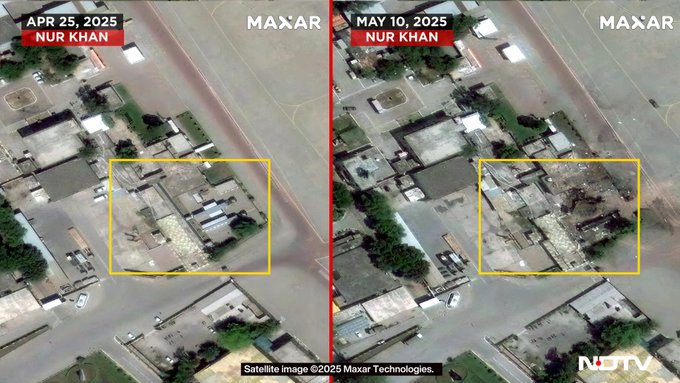In a significant development during the May 2025 India-Pakistan conflict, the Indian Air Force (IAF) successfully targeted and destroyed two of Pakistan Air Force’s (PAF) most advanced AI-enabled command platforms. These were part of the Next Generation Mobile Mission Control Centres (NG-MMCC) project stationed at the Nur Khan Airbase in Rawalpindi.
The destroyed systems were developed by the Centre of Artificial Intelligence and Computing (CENTAIC), a specialised wing of the PAF focused on integrating artificial intelligence, machine learning, sensor fusion, and big data into military operations. In collaboration with Turkish defence firms, CENTAIC had launched the NG-MMCC project to provide the PAF with mobile, AI-driven backup command-and-control units that could function independently in the event of strikes on static command centres.

These mobile platforms were equipped with AI-powered decision support tools, secure plug-and-play networking, encrypted voice communications, and cyber defence features. Their primary goal was to ensure that Pakistan’s air defence and battle management operations could continue even if its main command hubs were compromised.
However, the course of the project changed abruptly during Operation Sindoor, an IAF-led aerial offensive launched in response to the Pahalgam terror attack. Satellite imagery and independent defence analysis confirm that two NG-MMCC trucks and a supporting operations complex were directly hit in an airstrike on the Nur Khan base. The damaged area was later cleared by Pakistani authorities, indicating that the internal systems had suffered irreversible damage.
The destruction of these platforms eliminated a crucial layer of operational redundancy in the PAF’s command infrastructure. With the mobile command centres neutralised, the air force was left dependent solely on its main fixed facilities, significantly increasing its vulnerability in a future conflict scenario.

Indian defence analysts view the strike as a deliberate and calculated message. It not only demonstrated India’s capability to detect and target even concealed and mobile military assets but also exposed weaknesses in Pakistan’s AI-integrated defence plans. The strike is being interpreted as a sign that further operations could potentially cripple Pakistan’s remaining command structures and paralyse its air defence response.
For CENTAIC, the loss of the NG-MMCCs was a severe blow. Years of technological development, strategic planning, and international collaboration were wiped out in a matter of minutes. What was once hailed as a futuristic AI-enabled solution for battlefield command is now considered a failed and vulnerable asset in the face of precision warfare.
The IAF’s successful targeting of the Nur Khan Airbase has not only shifted the tactical landscape of the conflict but also highlighted the evolving nature of modern warfare where mobility and technology alone cannot guarantee survivability against superior intelligence and precision-strike capabilities.













